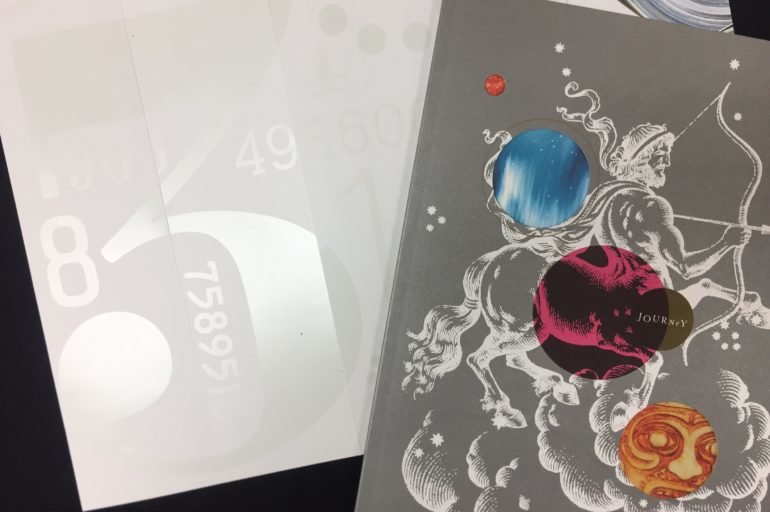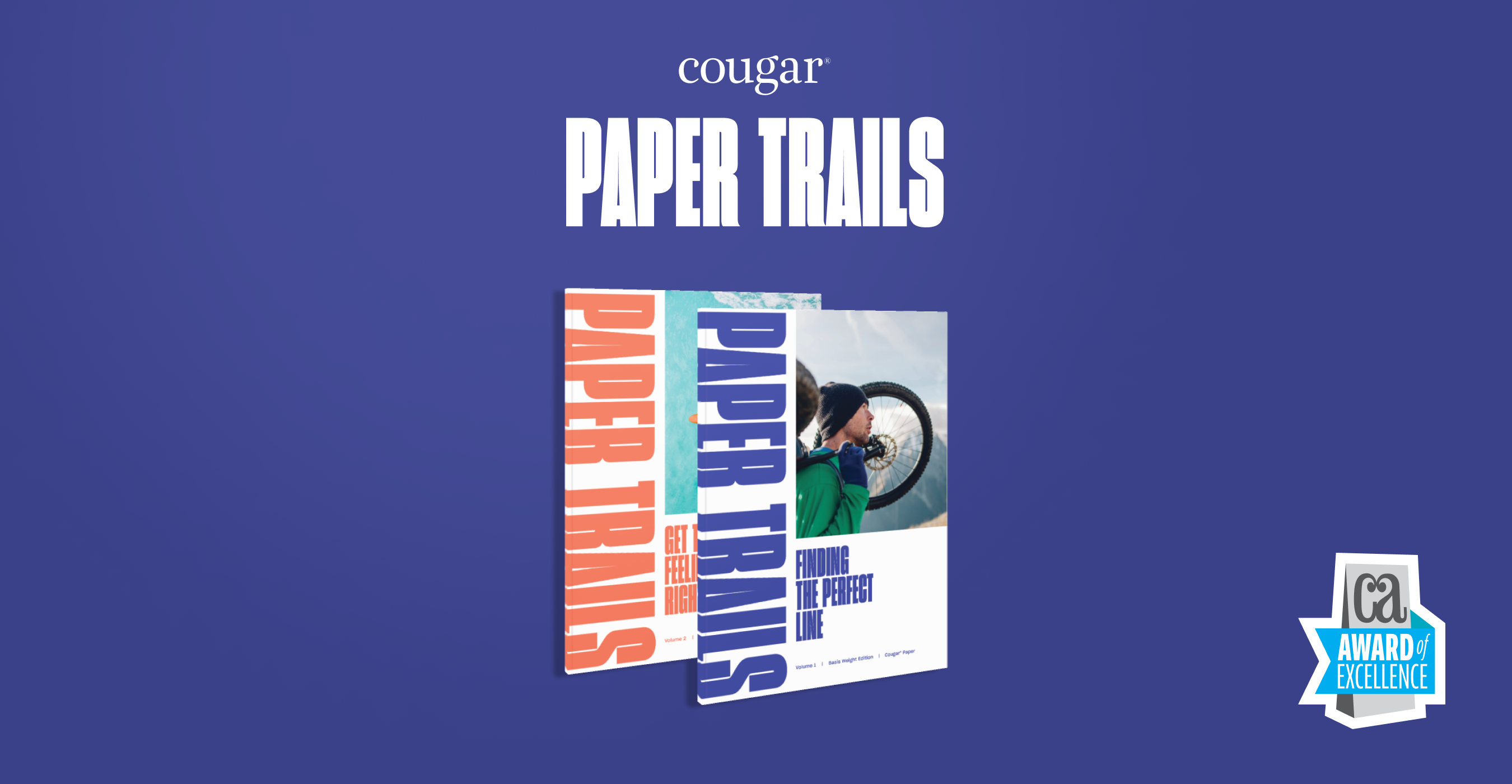In the world of commercial print, the overwhelming majority of print projects are produced on either coated or uncoated paper. Each type of paper has its pros and cons relative to the project. And printers will typically have a preferred or “house” stock available in both types to accommodate numerous projects. One type of better isn’t necessarily “better” than the other, however knowing when to use coated vs uncoated paper can make all the difference in your print results.
Coated vs Uncoated Paper – What’s the Difference?
When it comes to coated vs uncoated paper, the main difference is the way the paper is manufactured. Coated papers have a coating on them (typically clay), so they’re “sealed.” This restricts the amount of ink that is absorbed into the paper, allowing the ink to sit on top of the paper, in a crisp defined dot.
Uncoated papers do not have this coating and thus are more porous. The ink soaks into the paper and has a softer, warmer appearance. Uncoated papers are categorized by type: offset, opaque and text & cover. Domtar’s line of papers fall in the offset & opaque categories, with Cougar being a premium opaque sheet.
Coated papers are categorized in two ways; by their finish: gloss, dull, silk or matte or by quality (brightness and price): Premium, No. 1, No. 2, No.3, No.4, No. 5. A coated paper with brightness of 88+ is classified as a premium paper. The higher the brightness level, the more light that bounces off the sheet. Most inks are transparent, so the reflected gives the appearance of bright, crisp vivid image. With coated papers, the glossier the finish, the less ink absorption.
Uncoated white papers too are defined by their brightness levels – the brighter the sheet, the more light reflected back to the eye. For example, Cougar is a 98 Bright white sheet, meaning 98% of the light is reflected back to the eye of the viewer. This level of brightness helps four-color images “pop” off the paper as the lights reflects back through the ink.
Uncoated papers can have many finishes to them: smooth, linen, laid, vellum, and super smooth just to name a few. The smoothness level is an important factor when considering uncoated papers as it is not only what gives the paper its feel, but also affects ink holdout. The smoother the sheet the more even the ink lay. This is especially important when printing areas of heavy solids or metallic inks.
Coated vs Uncoated Paper – Choosing the Right Type of Paper
When it comes to deciding on which type of paper to use for your next print project, considering aesthetics, functionality and budget will determine the best one.
Aesthetics
Coated papers offer crisp, sharp results stark in contrast between the printed image and whitespace with a cool, slick feel. Their coated surface provides an excellent canvas for images with fine detail, and offers greater contrast between the printed image and white space (known as ink snap). They are often used for magazines and high-end product catalogs requiring “glossy” or “shiny” optics, think automotive, jewelry and appliances. Their coated surface provides an excellent canvas for images with fine detail, and offers greater contrast between the printed image and white space (known as ink snap).
Uncoated papers have an inherent warmth and tactility to them. Their haptics imply a sense of trust, authenticity and responsibility. It’s these characteristics that make them well-suited to projects in the educational, non-profit and environmental sectors. They are excellent choices for identity systems, publications, direct mail and catalogs. Depending on the finish, uncoated papers can lend a 3D quality to imagery featuring textiles, think home furnishings, apparel and fine art.
Cleveland Institute of Art, Creativity Matters. Designed by Cleveland Institute of Art. Printed by Oliver Printing Company on Cougar Smooth 80 lb. Text and 100 lb. Cover.
Functionality
Coated papers offer excellent ink holdout and perform well with areas of heavy solid color and metallic inks. Their surface, regardless of the finish, work well with techniques like varnishes, UV coatings and foil stamping as design elements – even with a subtle clear foil.
Some of the drawbacks of coated papers are that they are not able to be written on easily with a pen. If the project requires a lot of text, the glare of gloss coated papers can make it challenging to read. While coated papers offer excellent ink gloss, they often require an overall coating to protect the surface from scratching and fingerprints.
Uncoated papers work well with pressure based print techniques like embossing/debossing, letterpress and foil stamping. They provide a nice contrast between the surface of the sheet and the impression. They lend themselves well to folding, even on heavier weights (fold with the grain); and are an excellent choice for tactile packaging applications.
Some of the drawbacks to uncoated papers are due to the way they absorb ink. This drawback is minimized as you work with the smoother options within uncoated papers. If you opt for a premium uncoated paper with excellent formation, like Cougar, you’re likely to get better results.
That being said, there are some areas to be mindful of. Images featuring high detail, especially in the mid-tones, can sometimes appear “muddy.”
Depending on the amount of ink, uncoated sheets may require additional drying time (important to note if extremely tight turnaround). And depending on the formation of the paper, areas featuring heavy solids and metallics can have a mottled look. While uncoated papers work with coatings and varnishes, it is mainly for protective purposes and not as design elements.
Budget
When making comparisons between coated vs uncoated paper be sure to consider specifications like opacity and caliper. There is potential that you can utilize a lighter weight uncoated sheet vs coated.
For example if you are looking at an 80 lb coated text paper, a 70 lb uncoated paper will likely have equal or greater opacity and caliper. This means you are actually using and paying for less paper. This reduction might also help save shipping or mailing costs on the finished piece.
Both coated and uncoated papers offer a wide breadth of products across all price points. Budget alone should not dictate paper specification. If your project is budget driven, involve your print and paper reps early on in the process. They can help direct you to options that will work within your budget and yield successful print results.







